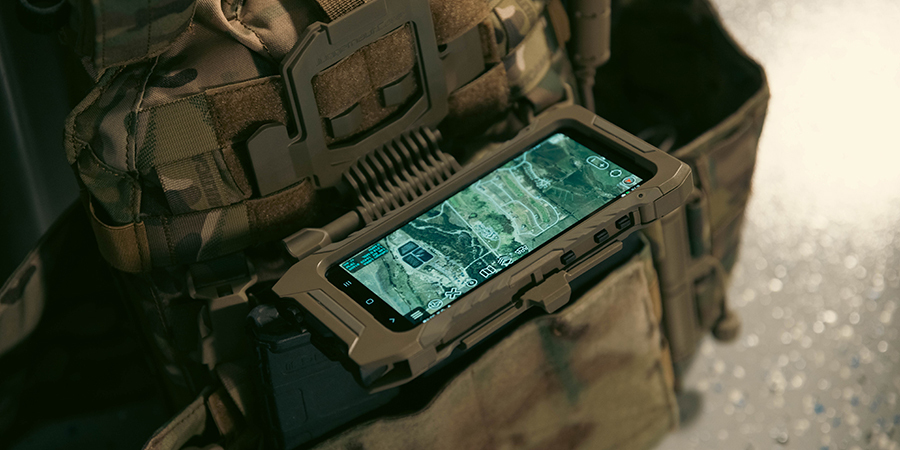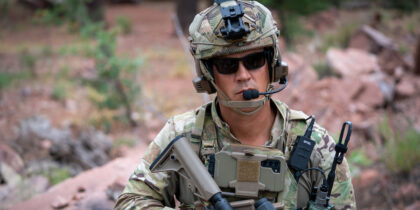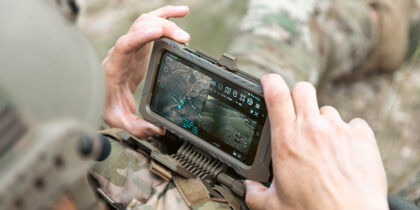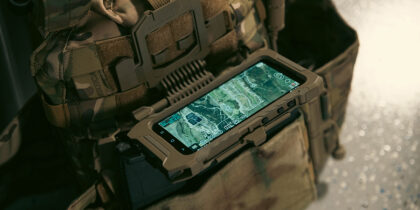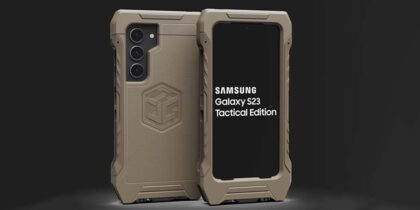Advanced mobile capabilities for defense: how to field custom solutions at COTS speed
From cutting-edge advanced intelligence to long-range, unmanned drones, rapid advances across the technology landscape are fundamentally transforming military operations. But unlike past defensive technology leaps, which were often rooted in Defense Department-sponsored research and built by the defense industrial base, commercial efforts are playing a pivotal role in driving this new wave of innovation. While this creates new opportunities, it also challenges the ability of the Department of Defense (DoD) to maintain and increase its technological advantage. Its approach to fielding new defensive capabilities was not designed to keep pace with the rapid rate of technological advancement driven by the commercial sector today.
The traditional model for defense acquisition typically requires a years-long process consisting of requirements planning, budget and acquisition analysis, and custom development efforts – all of which could mean a decade between identifying a need and fielding a new system. This risks DoD falling behind the curve across a number of areas from drone capabilities to tactical mobile computing and situational awareness. Turning to commercial products to meet these capability demands can dramatically shorten this timeframe while significantly reducing costs. However, simply using commercial-of-the-shelf technology (COTS) products is not always viable as they often lack both the functionality and security needed for military use. Bridging this gap is essential and creates a new urgency for enhancing collaboration with the commercial technology industry.
Commercial technologies strengthen the defense innovation ecosystem
The changing face of warfighting and the race to modernize defense systems has prompted a fresh look at the role of commercial technology products in the defense innovation ecosystem. This commitment to enhanced commercial sector collaboration is taking a number of forms. For example, DoD recently expanded the role and influence of the Defense Innovation Unit (DIU). The DIU-led Replicator initiative is focused on removing systemic roadblocks to scaling commercial technologies in order to deliver innovative capabilities to the warfighter at speed.
It has also recognized the value of customizing existing COTS technology to meet its needs rather than building custom solutions from scratch. Commercial technology products that have proven themselves in other arenas can be customized to meet defense requirements, fielded quickly, adapted based on evolving operator needs, and re-fielded. This iterative approach to implementing new technology solutions more closely mirrors the model that has defined the rapid innovation cycle of the technology industry and allows defense agencies to more effectively field technology advancements at pace.
Samsung Tactical Edition brings advanced mobile technology to the warfighter
The success of Samsung Tactical Edition smartphones for military operations exemplifies the potential of commercial technologies to drive successful outcomes across a number of mission sets, even in highly secure, demanding environments. Combining a COTS Samsung smartphone with a custom-built operating system (OS), Samsung’s Tactical Edition has been tested and proven to provide the durability, functionality, processing power and security required for precision military operations.
Samsung developed its first custom, tactical OS in 2012 while working closely with DoD and commercially launched the Galaxy S9 Tactical Edition in 2018. The Galaxy S9 Tactical Edition proved itself with special operations personnel, and their input was subsequently incorporated into the Galaxy S20 Tactical Edition, which has been reliably supporting thousands of military personnel across all branches of the military. Samsung has continued its development of the Tactical Edition portfolio, which was updated and expanded with the Samsung Galaxy S23 Tactical Edition and the Galaxy XCover6 Pro Tactical Edition.
Purpose-built to provide persistent communications in network-denied environments, the Samsung Galaxy S23 Tactical Edition and Galaxy XCover6 Pro Tactical Edition support conventional cellular capabilities as well as tactical radios and secure mission systems for full primary, alternate, contingency and emergency (PACE) communication requirements. Multi-ethernet and simultaneous ethernet and Wi-Fi capabilities provide dedicated connections to control and receive live video feeds from unmanned aerial vehicles (UAVs) and man-packed drones to heighten situational awareness. Drone image feeds can also be combined with laser range finders and external GPS to provide an even more refined common operating picture.
The Samsung Tactical Edition portfolio also provides several essential features to support command and control in challenging mission environments, including discrete operations, such as Covert Lock, Stealth Mode and night vision optic device capabilities. With its IP68 and MIL-STD-810H ratings, operators can be confident that the rugged Galaxy XCover6 Pro Tactical Edition will stand up to shock, vibration, dust, sand and water1. It also offers a sensitive touchscreen that precisely tracks movements even when wet or when gloves are worn2. Commercial Solution for Classified Use (CSfC) and National Information Assurance Partnership (NIAP) certified, both Galaxy S23 and XCover6 Pro Tactical Edition devices are secured by Samsung Knox and feature Knox DualDAR data encryption and an advanced virtual private network (VPN) chaining architecture that meets the most stringent security requirements.
Civilian field operations reap the benefits of longstanding DoD collaboration
Commercial technologies that have been customized, rigorously tested and proven for defense purposes can often be made readily available to civilian agencies, further extending the benefits of DoD’s commercial collaboration initiatives to missions protecting the homeland. Civilian agencies are increasingly turning to the Samsung Tactical Edition portfolio for field operations across diverse mission sets including search and rescue, wildland firefighting, federal law enforcement, and disaster response. In fact, Samsung smartphones running the Android Team Awareness Kit (ATAK) are ideally designed for situational awareness, providing real-time mapping of an operational area and the personnel and assets involved in the mission.
Stay mission-ready with Tactical Edition
For nearly a decade, Samsung and its diverse ecosystem of tactical partners have provided field-tested, proven mobile technology that can adapt to any mission need. The expanded Tactical Edition portfolio further extends this commitment. It brings the latest mobile technology advancements to bear across a broad mission set, driving enhanced situational awareness and greater command and control in any operating environment. The impact of Samsung’s longstanding collaboration with DoD highlights the benefits of commercial technology within the defense innovation ecosystem and demonstrates how working together can accelerate mission readiness.
Learn more about Samsung’s Tactical Edition line of purpose-built, operator-ready mobile devices.
1These devices passed military specification (MIL-STD-810H) testing against a subset of 21 specific environmental conditions, including temperature, dust, shock/vibration, and low pressure/high altitude. Real world usage varies from the specific environmental conditions used in MIL-STD-810G testing. Samsung does not guarantee device performance in all extreme conditions.
2Water resistant in up to 5 feet of water for up to 30 minutes. Rinse residue/dry after wet.
